Access to Computing in Higher Education: Capacity Building for BPC Projects (2010)
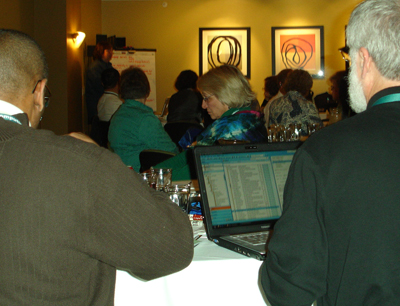
January 31, 2010
Los Angeles, California
The goal of the Access to Computing in Higher Education Capacity Building Institute (CBI) was to help participants better understand the under-representation and increase the participation of students with disabilities in computing and information technology (IT) postsecondary education fields and careers. Broad issue areas discussed included access to higher education curricula and courses through universal design of education and accommodations, best practices for outreach to veterans with disabilities in higher education, and increasing access to computing and IT through assistive technology, among others.
The CBI began with presentations about the importance of self determination for students and universal design in institutions. Following these presentations, small groups discussed questions such as "How can disability support services, computing departments, veterans organizations, and other groups work together effectively to increase the number of people with disabilities in the computing sciences?" Participants also heard from a panel about computing-rich careers and previewed a draft video on veterans with disabilities.
Introduction (Access to Computing in Higher Education: Capacity Building for BPC Projects 2010)
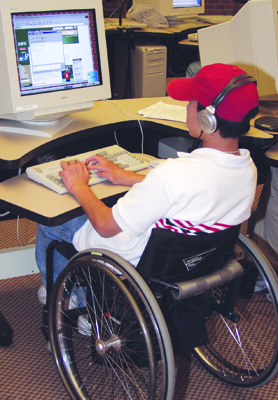
The Access to Computing in Higher Education Capacity Building Institute (CBI) was designed to help participants better understand the under-representation and increase the participation of students with disabilities in computing and information technology (IT) postsecondary education fields and careers. The CBI participants continue collaboration through an online community of practice (CoP). Both were undertaken to engage stakeholders in dialogue that will result in meeting the goals of Broadening Participation in Computing (BPC) projects. These activities were funded by the National Science Foundation (NSF, grant #CNS-0540615 and #CNS-0837508). They were coordinated by the Alliance for Access to Computing Careers (AccessComputing) led by the Department of Computer Science and Engineering and DO-IT (Disabilities, Opportunities, Internetworking, and Technology) at the University of Washington (UW).
AccessComputing institutional partners are Gallaudet University, Landmark College, and Rochester Institute of Technology. AccessComputing alliance partners are the Alliance for Students with Disabilities in Science, Technology, Engineering, and Mathematics (AccessSTEM); EAST Alliance for Students with Disabilities in Science, Technology, Engineering, and Mathematics (EAST); Midwest Alliance in Science, Technology, Engineering, and Mathematics (Midwest); Reaching the Pinnacle (RTP); National Center for Women and Information Technology (NCWIT); National Girls Collaborative Project (NGCP); Commonwealth Alliance for Information Technology Education (CAITE); Computing Alliance of Hispanic-Serving Institutions (CAHSI); Empowering Leadership: Computing Scholars of Tomorrow; and Advancing Robotics Technology for Societal Impact Alliance (ARTSI).
Goal and Outcomes
AccessComputing works to increase the participation of people with disabilities in computing and IT fields. AccessComputing collaborators apply evidence-based practices to:
- increase the number of students with disabilities successfully pursuing degrees and careers in computing fields
- increase the capacity of postsecondary computing departments to fully include students with disabilities in computing courses and programs
- create a nationwide resource to help students with disabilities pursue computing fields
- help computing educators and employers, professional organizations, and other stakeholders develop more inclusive programs and share effective practices nationwide
- make computing and IT careers and programs more welcoming and accessible to students with disabilities
The CBI was tailored to personnel of projects funded by the Broadening Participation Program of the National Science Foundation's Computer and Information Science and Engineering (CISE) program.
Capacity-Building Activities
AccessComputing collaborates with project partners in a variety of ways to:
- conduct a CBI
- share results of the CBI with other institutions and individuals
- provide an electronic CoP to continue discussion of veterans issues and provide support of efforts to increase services and supports for veterans
- extend resources to other programs and promising practices via an online searchable AccessComputing Knowledge Base
Audiences for These Materials
This publication was created for people who:
- participated in the Access to Computing in Higher Education CBI
- want to conduct a CBI at their institution, in their region, or at a national or international forum
- seek to increase their understanding of issues surrounding the under-representation and participation of students with disabilities in computing studies and careers
- are motivated to join an electronic community to discuss these issues
- would like to access resources to help them make their campus courses, services, and activities more welcoming and accessible to students with disabilities
- have promising practices for serving students with disabilities in computing to share with others
About the CBI (Access to Computing in Higher Education: Capacity Building for BPC Projects 2010)
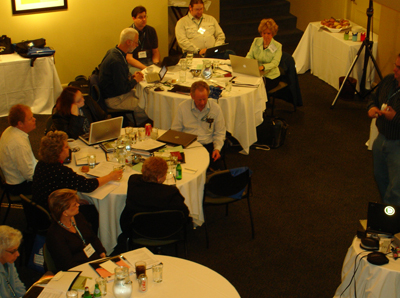
The Access to Computing in Higher Education CBI took place on January 31, 2010, in Los Angeles, CA. Its overall purpose was to explore ways to increase the participation and success of students with disabilities in computing and IT postsecondary studies and careers.
Participants in this one-day event included administrators and teaching faculty from institutions around the county. Hosted by the University of Washington, the CBI provided a forum for comparing recruitment and access challenges, sharing successful practices, developing collaborations, and otherwise increasing the capacity of institutions to serve students with disabilities in computing and IT fields. Specific goals of this CBI were to:
- Bring together campus and community members who represent students with disabilities, faculty and administrators in IT and computing, and programs that serve to broaden participation in computing and IT fields.
- Share best practices and develop new methods that will increase the number and success of students with disabilities in computing and IT fields.
- Learn about accessibility, universal design, and funding opportunities to increase the participation for students with disabilities in computing and IT fields.
- Network with colleagues from around the country.
Speakers and panelists were also CBI participants and shared their expertise on a variety of topics related to computing, IT, and student success. Broad issues that were discussed included:
- access to higher education curricula and courses through universal design of education and accommodations
- best practices for outreach to veterans with disabilities in higher education
- strategies to develop effective partnerships between disabled student services offices, computing departments, veterans organizations, and other campus services
- increasing access to computing and IT through assistive technology
- developing accessible computing and IT curricula
- assisting students with disabilities in their transitions to computing and IT graduate education and careers
In this CBI:
- All participants contributed to its success.
- Experts in topic areas were in the audience.
- Although some of the CBI content was predetermined, discussions and presentation content changed as the meeting unfolded and participant interests were expressed.
The CBI was comprised of panel and individual presentations and working group discussions. Panel discussions and individual presentations offered participants opportunities to discover new ways to make computing and IT accessible for students with disabilities. Working group discussions allowed participants time to gather in small groups and discuss the following questions:
- How can disability support services, computing departments, veterans organizations, and other groups work together effectively to increase the number of people with disabilities in the computing sciences?
- What specifically can your computing department, disability support services office, veterans organization, and other campus service do to improve the recruitment and support of students with disabilities in computing departments and IT careers?
The agenda for the CBI, summaries of the presentations and panels, and reports from the working group discussions are provided on the following pages.
Agenda (Access to Computing in Higher Education: Capacity Building for BPC Projects 2010)
8:00-8:50 a.m.
Registration, Light Breakfast, and Networking
9:00-10:00 a.m.
Welcome
- Institute objectives and schedule
- Introductions
- Housekeeping details: restrooms, breaks, and meals
- Accessibility of the CBI
- CBI materials
- AccessComputing: goals, objectives, activities, and products
Framework for Access
Student – Self Determination
Institution – Universal Design
10:00-11:00 a.m
Accessible Technology
- View Video: World Wide Access: Accessible Web Design
www.washington.edu/doit/videos/index.php?vid=35 - Universal Design in Education
Sheryl Burgstahler, AccessComputing Co-Director
11:00-11:15 a.m.
Break
11:15-12:30 p.m.
Success Stories
Careers in Computer Science and Disability
Richard Ladner, AccessComputing Co-Director
12:30-1:15 p.m.
Lunch and Working Group Discussion
Question 1: How can disability support services, computing departments, veterans organizations, and other groups work together effectively to increase the number of people with disabilities in the computing sciences?
1:15-1:35 p.m.
Working Group Reports
Working group representatives each deliver a brief summary of their group's discussion and accomplishments.
1:35-2:20 p.m.
Our Paths to Computing-Rich Careers
Panel:
- New Mexico State University
Jeanine Cook - University of California, Los Angeles
Emanuel Lin, Etienne Membrives
2:20-2:45 p.m.
Special Issue: Veterans with Disabilities
View draft video and provide formative feedback: Returning From Service: College and IT Careers for Veterans
2:45-3:00 p.m.
Break
3:00-3:45 p.m.
Working Group Discussion
Question 2: What specifically can your computing department, disability support services office, veterans organization, or other campus service do to improve the recruitment and support of students with disabilities in computing departments and IT careers?
3:45-4:20 p.m.
Working Group Reports
Working group representatives each deliver a brief summary of their group's discussion and accomplishments.
4:20-4:30 p.m.
Access to Computing in Higher Education Participant Survey
Complete and place in evaluation box.
4:30 p.m.
Adjourn
Presentation Summaries (Access to Computing in Higher Education: Capacity Building for BPC Projects 2010)
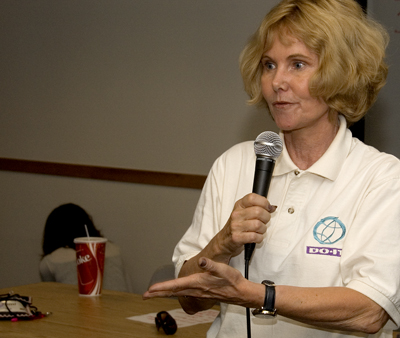
Universal Design in Education
Universal design is about making things usable for the most people possible. Universal design is an attitude that values diversity, equity, and inclusion; a goal; and a practice that makes products and environments welcoming, accessible, and usable. Often the diversity of users is not visible; for example, many disabilities (such as learning disabilities) are not obvious. Universal design is beneficial for people with disabilities) and also for those with diverse characteristics with respect to age, gender, race, ethnicity, etc.
Some examples of universal design include the following:
- Assessment—Test for student knowledge in a predictable way.
- Training software—Notifies users when they don't choose an appropriate selection.
- Science lab—Provide an adjustable-height workstation table that can be used by people with a wide range of physical abilities.
- Purchasing new products—Ask vendors about the accessibility of their products and express your preference for purchasing accessible products to raise awareness.
Often inaccessibility is blamed on the disability; however, the universal design approach focuses on making instruction, services, physical spaces, and technology more accessible in their design. Being proactive minimizes the need to be reactive. Universal design of learning provides multiple means of representation, expression, and engagement. It allows students multiple ways to engage in class discussions and activities. Applying universal design to IT minimizes the need for assistive technology and accommodations. It is important to think about how you might address the needs of students with various types of disabilities when planning classes, before you know whether or not you have someone with a disability in your class.
Careers in Computer Science and Disability
Richard Ladner
Computing has changed the way we live, work, learn, and communicate. Computing drives advances in many fields and enables growth and development in our economy.
High-tech fields are growing at a fast rate. Jobs in computing also have salaries that are at the top of the chart. Shortages are expected to be particularly significant in a number of high-growth fields, with computer science having one of the biggest gaps. Future growth opportunities in the computing industry include new approaches to networking; advances in the fields of science and engineering; safer cars or ones that in some ways drive themselves; models for personalized education, health monitoring, and preventative medicine; and quantum computing. Future developments will lead to a better quality of life for many people.
Individuals enter the computing field for a variety of reasons. This diversity leads to better solutions. People pursue diverse careers following a computer science or other IT education. They do not necessarily migrate to a strict programming position.
NSF data reveals that 18% of students with and without disabilities are interested in natural science and engineering. Of postsecondary students with disabilities, more than 50% attend public two-year schools and nearly 40% attend public four-year schools. Students with disabilities are less likely than students without disabilities to complete a bachelor's degree; only 40% of students with disabilities attained bachelor's degrees, versus 60% of all students. Graduate students with disabilities are less likely than graduate students without disabilities to major in natural science and engineering. NSF estimates that, although people with disabilities make up 16% of the population and 10% of the U.S. workforce, they account for 11% of the STEM undergraduate student population, 7% of the STEM graduate student population, 1% of all STEM doctorate recipients, 5% of the STEM workforce, and 8% of STEM postsecondary faculty.
Students with disabilities tend to drop out of computing majors more often than students in other disciplines, and very few students with disabilities go on to advanced degrees in computing. Some notable exceptions include Stephen Hawking, a world-renowned physicist who has mobility and speech impairments; TV Raman, a blind computer scientist at Google; Christian Vogler, a deaf computer scientist who has worked on sign language recognition; Chieko Asakawa, who worked on social accessibility to improve accessibility of web pages; and Jonathan Kuniholm, a veteran with a disability working on prosthetic limbs. People with disabilities can do almost anything in any scientific field, and some are highly motivated to pursue careers in accessibility research.
Reports from Panel Discussions (Access to Computing in Higher Education: Capacity Building for BPC Projects 2010)
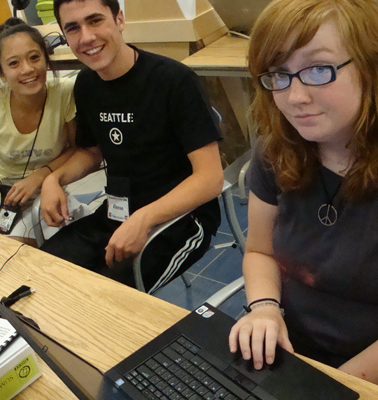
Our Paths to Computing-Rich Careers
IT students from the University of California, Los Angeles and a faculty member from New Mexico State University shared their experiences and insights into pursuing a computer science career as a person with a disability. Some panelist comments follow.
- An education takes hard work and effort; use all of the resources at your disposal to help you succeed and keep your academic goals in sight.
- Enlist the support of family and friends in your educational pursuits.
- Choose your career based on your interests as well as career opportunities.
- Don't focus on what you can't do, focus on what you can do.
- When you are choosing a school, be sure to look at the physical accessibility of classrooms and the campus.
- When looking at campuses, be sure to meet with the disability services office to see how helpful they are with accommodating students.
- Note takers and one-on-one assistants can be helpful for people with certain disabilities.
- Ask if the disability services office provides exam proctoring, which may provide extra time for test taking.
- On your campus visit, check out the computer labs and ask if they provide assistive technology, such as one-handed keyboards, voice dictation software, scanners, and other tools for student use.
- Research other local organizations, such as rehabilitation offices, to see if they can provide assistance.
- Talk to your advisor to ensure you are taking the correct courses to graduate on time.
- Make it a priority to initiate and maintain direct contact between yourself and faculty members; consider this type of initiative crucial for students with disabilities.
- Don't let your disability get you down; everybody has some form of disability.
- Anything is possible; think of the possibilities. Have a vision of success.
Reports from Working Group Discussions (Access to Computing in Higher Education: Capacity Building for BPC Projects 2010)
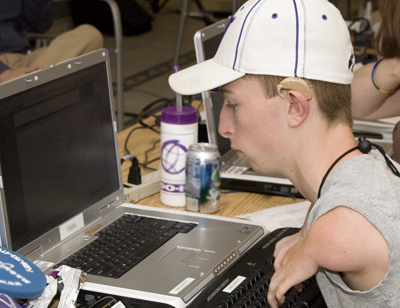
CBI participants represented a wide range of stakeholders, including postsecondary faculty and staff, and employees of BPC projects serving students around the country. They came together to brainstorm and share ideas about how to better serve students in computing fields in postsecondary education. The following lists present some of the ideas shared in the brainstorming discussions.
Question 1
How can disability support services, computing departments, veterans organizations, and other groups work together effectively to increase the number of people with disabilities in the computing sciences?
- Try to change the campus culture of communication about disability. Advocate for a welcoming and accessible approach with respect to current and potential students with disabilities.
- Assign faculty members as points of contact for students with disabilities. These members can ensure resources are available to students via email, websites, and service units and individuals.
- Create K-12 outreach programs where students, including those with disabilities, can come to a postsecondary campus or hold transition programs at local schools. These offerings should send a positive, welcoming message to incoming freshmen with disabilities, and make them aware of campus resources available to them.
- Invite guest speakers to campus who have disabilities or who are developing technology for people with disabilities.
- Make faculty and staff more aware of different types of disabilities (invisible and visible) via brochures and online resources.
- Provide recruitment links to an online class list when someone in class needs a note taker.
- Make sure the campus offices of student services are well equipped with individuals to proctor extended-time exams.
- Ensure that academic technology services (e.g., computing commons areas and help desks) support assistive technology and facilities.
- Train faculty so that they can effectively work with students who have disabilities and encourage them to share ideas with each other regarding how to best work with a student who has a disability.
- Offer all students suggestions for research topics that benefit people with disabilities, such as the design of robotics to do assistive tasks.
- Create prominent online lists of campus resources that are available to students with disabilities.
- Ensure that a welcoming environment and attitude is present in student service offices.
- Have campus administrators tour the campus to observe how welcoming and accessible their schools are to students with a variety of disabilities.
- Do not let anyone feel like a second class citizen.
- Integrate assistive technology within general-access computing labs.
Question 2
What specifically can your computing department, disability support service office, veterans organization, or other campus service do to improve the recruitment and support of students with disabilities in computing departments and IT careers?
- Work to ensure that students with disabilities are fairly represented in the student body.
- Offer sensitivity training for faculty, student service offices, and campus administrators.
- Be sensitive to issues surrounding the circumstances of disability-related incidents around campus (hirings, firings, action planning).
- Redesign tests to take the emphasis away from time limits.
- Address issues surrounding exam proctoring for students with disabilities and improve communication between disability service offices, faculty, and the student who needs extended time for tests.
- Hold lectures as if a student with a disability was present (e.g., describe visual content orally to benefit all students).
- Encourage faculty members to be prepared to provide course materials in alternate formats available for students.
Specifically, some participants agreed that they would:
- develop and implement campus workshops to raise awareness of accessibility issues
- bring materials to the Provost and department heads in order to increase awareness about disability-related issues
- arrange physical spaces to be more accessible to everyone, including counter heights and campus signage
- hold regular assessments of the accessibility of courses, services, and programs
- redesign faculty and department websites to embrace universal design standards
- include questions about disability status on student evaluation and other forms when other demographic data is collected
- ensure representation of students with disabilities in the institution's evaluation processes (e.g., make sure online instruments are accessible to students who are blind and using screen reader software and speech output devices)
- make a statement on syllabi and in class about welcoming students from diverse backgrounds and notifying students about the availability of student support services
- use multi-modal presentations, including captioned media, in the classroom
- conduct exit interviews with students with disabilities that might help identify accessibility and cultural issues in academic programs, keeping responses confidential
Participants (Access to Computing in Higher Education: Capacity Building for BPC Projects 2010)
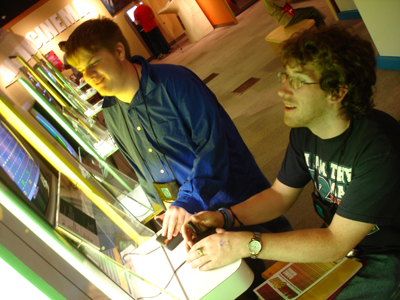
Stakeholder groups represented in the CBI included:
- student services leaders and administrators
- computing faculty
- technology specialists
- BPC project staff
The following individuals participated in the CBI:
Juan Arratia
Principal Investigator
Caribbean Computer Center for Excellence
juan.arratia@gmail.com
Sarbani Bannerjee
Associate Professor
Buffalo State College
BANERJS@BuffaloState.edu
Phillip R. Bording
Associate Professor and Chair
Alabama A&M University
cschair@aamu.edu
Monica Brockmeyer
Associate Professor
Wayne State University
mab@cs.wayne.edu
Sheryl Burgstahler
Co-Director, AccessComputing
University of Washington
sherylb@uw.edu
Jeanine Cook
Associate Professor
New Mexico State University
jecook@nmsu.edu
Niels da Vitorio Lobo
Associate Professor
University of Central Florida
niels@cs.ucf.edu
Mohsen Dorodchi
Cardinal Stritch University
mdorodchi@gmail.com
Maria Gini
Professor and Associate Head
University of Minnesota
gini@cs.umn.edu
Arnold Herrera
Web Developer
University of Texas at El Paso
aherrera16@utep.edu
Khaled Kamel
Chair and Professor
Texas Southern University
kamelka@tsu.edu
Richard Ladner
Co-Director, AccessComputing
University of Washington
ladner@cs.washington.edu
Daniela Marghitu
Associate Professor
Auburn University
daniela@eng.auburn.edu
Radha Nandkumar
Senior Research Scientist
International and Campus Relations (ICARE)
University of Illinois at Urbana-Champaign
radha@ncsa.uiuc.edu
Veeramuthu Rajavivarma
Associate Professor
SUNY, Farmingdale State College
rajav@farmingdale.edu
Suzanne Schaefer
Senior Analyst/Computer Science Coach
University of California Los Angeles
suz.schaefer@gmail.com
Ben Sommers
Program Assistant, DO-IT
University of Washington
bas7@uw.edu
Valerie Taylor
Department Head
Texas A&M Engineering
taylor@cse.tamu.edu
Michael Vieira
Associate Vice President for Academic Affairs
Bristol Community College
Michael.Vieira@bristolcc.edu
Andrew Williams
Associate Professor and Chair
Spelman College
williams@spelman.edu
AccessComputing Website, Searchable Knowledge Base, and Online Community (Access to Computing in Higher Education: Capacity Building for BPC Projects 2010)
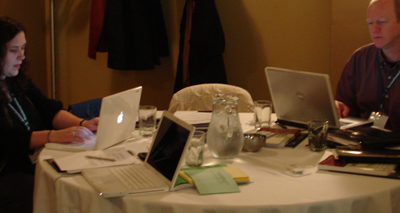
The AccessComputing website contains:
- information about project goals
- the application of evidence-based practices toward project deliverables
- resources for students with disabilities
- educational materials for postsecondary faculty and staff
- information about partners and collaborators
- program applications
AccessComputing staff maintain a searchable database of frequently asked questions, case studies, and promising practices related to how educators and employers can fully include students with disabilities in computing activities. The Knowledge Base can be accessed by following the "Search Knowledge Base" link on the AccessComputing website.
The Knowledge Base is an excellent resource for ideas that can be implemented in programs in order to better serve students with disabilities. Individuals and organizations are encouraged to propose questions and answers, case studies, and promising practices. In particular, the promising practices articles serve to spread the word about practices that show evidence of improving the participation of people with disabilities in computing. Contributions and suggestions can be sent to doit@uw.edu.
Examples of Knowledge Base article titles include the following:
- How can I make my computing department more accessible to students with disabilities?
- Universally designed web pages: A case study on access issues for a student with a learning disability
- What adaptive technology is typically provided to students with disabilities on postsecondary campuses?
- What are specific computer applications that can assist students with learning disabilities?
- Are there any web-based tutorials on web accessibility?
- How can principles of universal design be used to construct a computer lab?
Community of Practice (Access to Computing in Higher Education: Capacity Building for BPC Projects 2010)
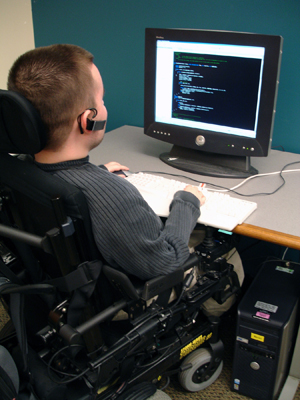
To continue to engage with Sheryl, Richard, and others interested in making computing and IT fields more welcoming and accessible to students with disabilities, consider joining one of our online CoPs. Communicating through email, CoPs share perspectives and expertise and identify practices that promote the participation of people with disabilities in computing fields. Collaborators may request Alliance funding for registration fees and publications for conferences for which their Alliance presentations/exhibits are accepted, on-campus events, and computing internships for students with disabilities. Three CoPs are most relevant to the January 2010 CBI. You and your colleagues can join AccessComputing CoPs by indicating which of the three CoPs you would like to join and sending the following information to accesscomp@uw.edu:
- Name
- Position/title
- Institution
- Postal address
- Email address
- Computing Faculty, Administrator, and Employer CoP engages computing professionals, faculty, and administrators, as well as representatives from industry and professional organizations to increase their knowledge about disabilities and make changes in computing departments that lead to more inclusive practices. Participants:
- gain and share knowledge and help identify issues related to the under-representation of people with disabilities in computing fields
- help identify, field test, and validate Computing Department Accessibility Indicators to make computing departments more accessible to students with disabilities
- introduce Alliance staff to administrators of professional computing organizations; so that staff can help these organizations make their websites accessible, their conferences accessible to attendees with disabilities, and their conference programs inclusive of disability-related topics
- identify campus computing events to which students with disabilities might be invited
- provide connections with computing faculty and industry for internships
- Broadening Participation CoP is populated with Alliance collaborators who administer Alliances and projects that serve to broaden participation in computing fields. Members:
- discuss how to recruit participants with disabilities and accommodate them in their programs and activities and to, overall, make their offerings more accessible
- recruit their participants with disabilities into AccessComputing Alliance e-mentoring, internships, academies, and workshops to complement their activities
- co-sponsor events, discuss potential new projects, share funding possibilities
- disseminate Alliance information and information about their projects and results through the Knowledge Base
- Disability Services CoP of disability service professionals from community/technical colleges, four-year colleges, and universities nationwide, together with their networks of postsecondary and K-12 schools (e.g., affiliates of AHEAD) and parent groups (e.g., affiliates of PACER). Members:
- recruit high school and college students with disabilities for Alliance academies and workshops, e-mentoring communities, internships, and other activities
- deliver presentations to computing faculty to share information about accommodations and campus services for students with disabilities
- identify and validate Computing Department Accessibility Indicators
- work with computing professors and administrators to invite students with disabilities to career fairs, computing lectures, and other events
- work with groups to make sure activities are accessible
- help bring speakers with disabilities and exhibits that focus on disability-related topics
- suggest content for the AccessComputing Alliance Knowledge Base
Acknowledgments (Access to Computing in Higher Education: Capacity Building for BPC Projects 2010)
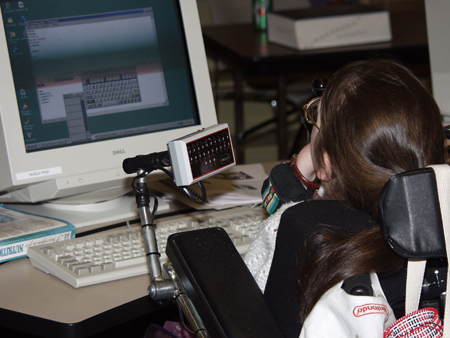
AccessComputing Capacity Building activities are funded by the National Science Foundation (grant #CNS-0540615 and #CNS-0837508). They were coordinated by the Alliance for Access to Computing Careers (AccessComputing), which is led by the Department of Computer Science and Engineering and DO-IT at the University of Washington. Any opinions, findings, and conclusions or recommendations expressed in this material are those of the CBI presenters and publication authors, and do not necessarily reflect the views of the National Science Foundation.
Some of the content of this publication is taken with permission from the DO-IT website at https://www.washington.edu/doit/. Permission is granted to modify and duplicate these materials for noncommercial purposes provided the source is acknowledged.
Electronic versions of this publication are available in print-ready and accessible formats at https://www.washington.edu/doit/.